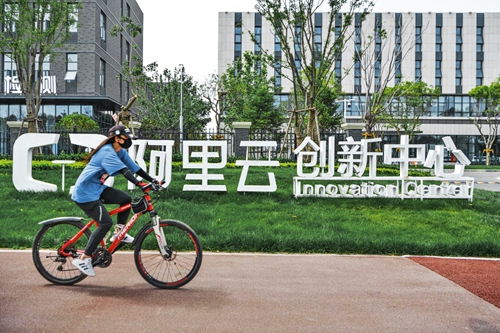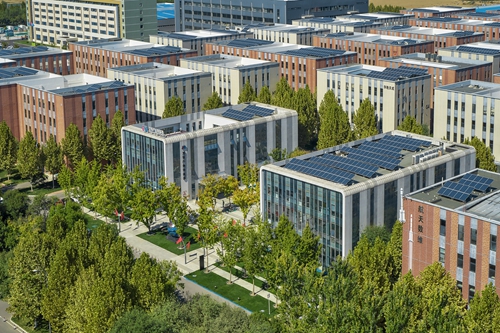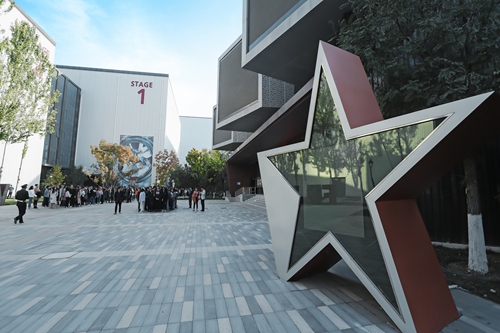CFLD sees soaring revenue and net profit in 2019
Source:Global Times Published: 2020/4/28 18:08:40

A rider passes through Wuzhi New Industry City, Central China's Henan Province, established by CFLD. Photo: Courtesy of CFLD
China Fortune Land Development Co (CFLD), one of the leading Chinese New Industry City operators witnessed its revenue soar in 2019. The company is committed to the development of a new industrial city model. Building around Beijing, Tianjin and Hebei Province, the Guangdong-Hong Kong-Macao Greater Bay Area, as well as the Yangtze River Delta Region, the company has launched 79 new city areas, and 66 of them are starting to make profit, with technology development such as big data, new-energy vehicles and intelligent manufacturing.
In the past year, the company's revenue reached 105.21 billion yuan ($14.8 billion), an increase of 25.6 percent year-on-year, and its net profit reached 14.612 billion yuan, an increase of 24.4 percent year-on-year. The compound annual growth rate of net profit in the past five years reached 32.1 percent.
Record scale of new city projects
In 2019, the new investment in the park operated by CFLD was 195.61 billion yuan, reaching a record high with an increase of 17.8 percent compared to the same period last year.
There were 545 newly signed companies entering the park, including BOE, a leading global semiconductor display industry, and Sunwoda, a leading lithium-ion battery company.
A large number of industry leading companies have since settled in new industrial cities.

Aerial view of Gu'an New Industry City, North China's Hebei Province Photo: Courtesy of CFLD
Accelerating industrial layout
On the basis of the new industrial city, CFLD also began to develop commercial real estate and related businesses. In June 2019, CFLD (Wuhan) was established. The launch is the first new attempt of the parent company.
In October 2019, CFLD and the World Laureates Association reached a deal that both parties will work together to build a platform for technological innovation cooperation.
"We will rely on this platform and rely on its abundant resources and experience accumulated by CFLD in the development of Industrial New Cities and comprehensive urban areas. We are vigorously expanding the business of the scientific community, and the first project is under planning and implementation in Shanghai," said Wu Xiangdong, co-chairman, chief executive officer and president of CFLD.
According to CFLD, the company is prioritizing eight core cities including Beijing, Shanghai, Guangzhou, Wuhan and Chengdu, and is aggressively entering the commercial real estate field such as retail properties and office buildings, while actively exploring sectors in public housing and the scientific communities.
With the vision of becoming China's leading real estate investment group, CFLD continues to deepen the metropolitan projects under the strategic opportunity of urbanization and metropolitanization.

Dachang New Industry City, North China's Hebei Province Photo: Courtesy of CFLD
The company will continuously improve cash flow capacity, reduce liabilities, and maintain steady growth in profits, in order to improve the quality of operations, and achieve long-term and stable development of the company's business.
"The metropolitan era has arrived. Population, technology, capital, education, medical care and other resources are rushing into metropolitan areas. From the perspective of population growth, the population growth of metropolitan areas is two to three times the national average, accounting for about two thirds of the population growth of new urban cities in the future," explained Wang Wenxue, chairman of CFLD.
"From the perspective of innovation factors, it is expected that in the future 60 percent of listed companies and 90 percent of venture capital projects will be concentrated in urban areas. CFLD has laid out plans in 15 metropolitan areas. The next task is to continue to cultivate and implement such plans," Wang said.
Posted in: INDUSTRIES